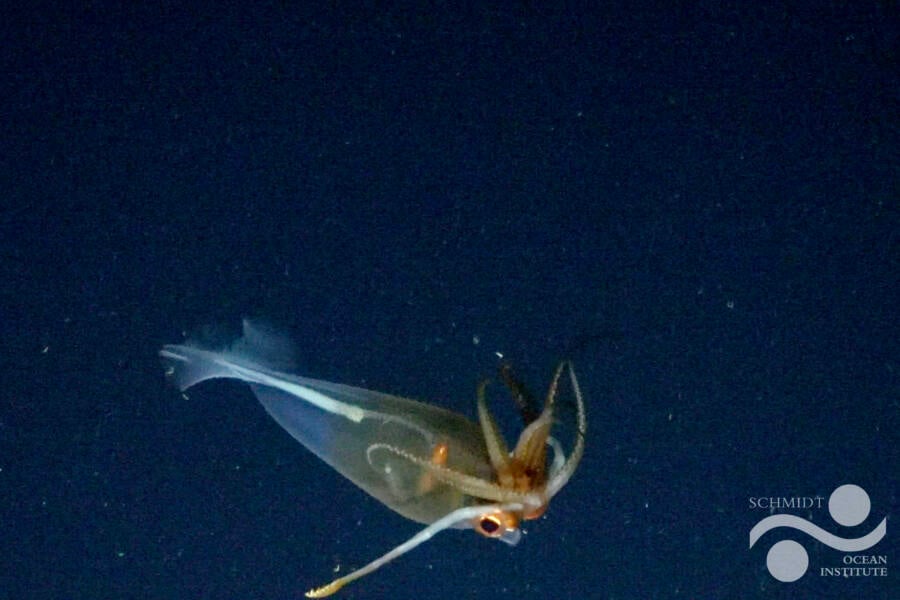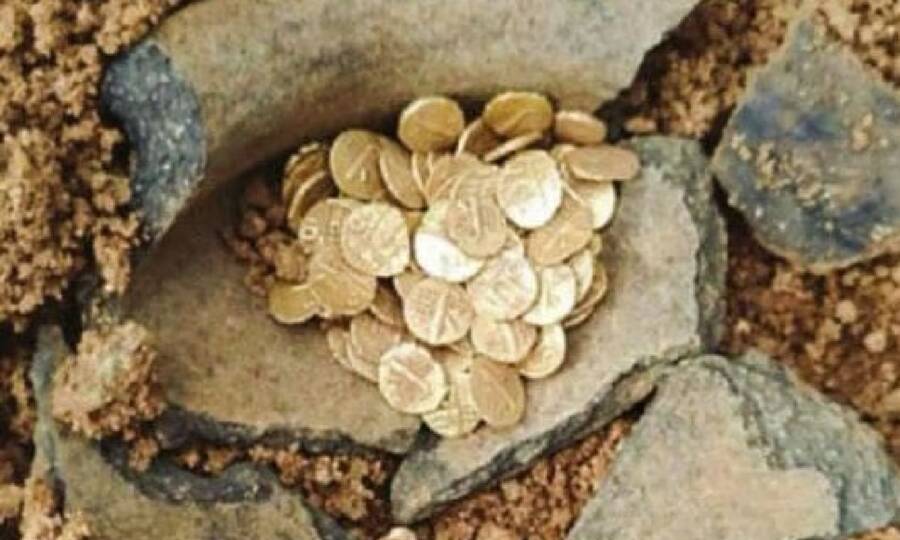Giant of the Deep: Colossal Squid Spotted Alive for the First Time Ever!
Ever wondered what’s lurking in the darkest depths of the ocean? Imagine a creature so elusive and mysterious, it’s only been a myth, a subject of sailors’ tall tales, until just now!
In a world where the wonders of the deep sea remain largely uncharted, the colossal squid, Mesonychoteuthis hamiltoni, has finally made its grand entrance. Known more as the stuff of legends than as a species one might actually encounter, this giant of the deep has until recently, remained as invisible as a ghost under your bed, unseen in its natural aquatic abode.
Well, folks, the veil of mystery has been lifted! This past March, the ocean granted us a rare glimpse into its secrets, revealing live footage of what many believed was merely a figment of oceanic lore. The sight of a juvenile colossal squid, all translucent and bewildering, was nothing short of a scientific jackpot!
Are you ready to dive deep into this story? Join me as I attempt to navigate these uncharted waters and discover what this means for our understanding of the deep ocean. Also, don’t forget to check out the fascinating link to find out how these squid have been part of our nightmares and legends for centuries. Get ready to be hooked, because this is a tale of the sea that you won’t forget soon! LEARN MORE
Although the species was first identified 100 years ago, the colossal squid has remained elusive and has never been seen alive in its natural environment — until now.

Schmidt Ocean InstituteThe first confirmed footage of a baby colossal squid in its natural environment.
For the first time since the species was discovered a century ago, a live colossal squid has been caught on video in its natural habitat.
The footage was captured by a remotely operated vehicle (ROV) dubbed SuBastian near the South Sandwich Islands on March 9, 2025 — and the discovery came as quite a shock to the researchers monitoring the live feed. The ROV was 1,968 feet below the surface of the water when a young squid swam across its path, a sight that researchers called “beautiful and unusual.”
Until now, no one had observed the species alive in the deep sea.
The Initial Discovery Of The Colossal Squid 100 Years Ago

Schmidt Ocean InstitutePreviously, only a handful of live specimens had been seen. Most of what is known about the species has been gleaned from fragments, often found in sperm whales’ stomachs.
The colossal squid (Mesonychoteuthis hamiltoni) was first identified in 1925 when two arm crowns were found in a sperm whale’s stomach near the Falkland Islands. British zoologist Guy Coburn Robson examined the remains and formally described the species, naming it after E. Hamilton, who made the initial discovery.
For decades, any knowledge about the colossal squid was limited to similar fragments. It wasn’t until 1981 that a complete specimen was recovered, and later, in 2003, researchers found a 17.7-foot subadult female weighing around 661 pounds.
In 2007, the largest known specimen, weighing around 1,091 pounds, was captured and is now displayed at the Museum of New Zealand Te Papa Tongarewa.
However, in all that time, the colossal squid managed to remain largely elusive. Researchers had never observed the species in its natural deep-sea habitat — and even now, they hadn’t expected to.
Yet last month, a team of international researchers and crew on board the Schmidt Ocean Institute’s research vessel Falkor (too) used the ROV SuBastian to capture live footage of the deep ocean.
The First-Ever Footage Of A Colossal Squid In Its Natural Habitat

Schmidt Ocean InstituteThe research vessel Falkor (too), which allowed an international team of scientists to make this discovery.
The discovery came as part of a 35-day expedition searching for new marine life. On March 9, a full 100 years after the species was first identified, the team saw a baby colossal squid. While adults can grow to more than 20 feet in length, this specimen was just under a foot long.
“It’s exciting to see the first in situ footage of a juvenile colossal and humbling to think that they have no idea that humans exist,” said Dr. Kat Bolstad, a cephalopod biologist at the Auckland University of Technology, in a press release.
“For 100 years, we have mainly encountered them as prey remains in whale and seabird stomachs and as predators of harvested toothfish,” Bolstad continued.

Schmidt Ocean InstituteThe remotely operated vehicle, SuBastian, that filmed the squid.
Although only a few specimens have ever been fully observed, colossal squids are estimated to grow up to 23 feet in length and can weigh up to 1,100 pounds, making them the heaviest invertebrate on the planet. The life cycle of the colossal squid is relatively unknown, but based on observations, it is clear that the squids have a translucent appearance as juveniles and become more opaque as they mature into adulthood.
Fishermen had previously reported seeing dying colossal squids near the surface of the ocean, but before now, the squids had never been seen alive in the deep sea.



















